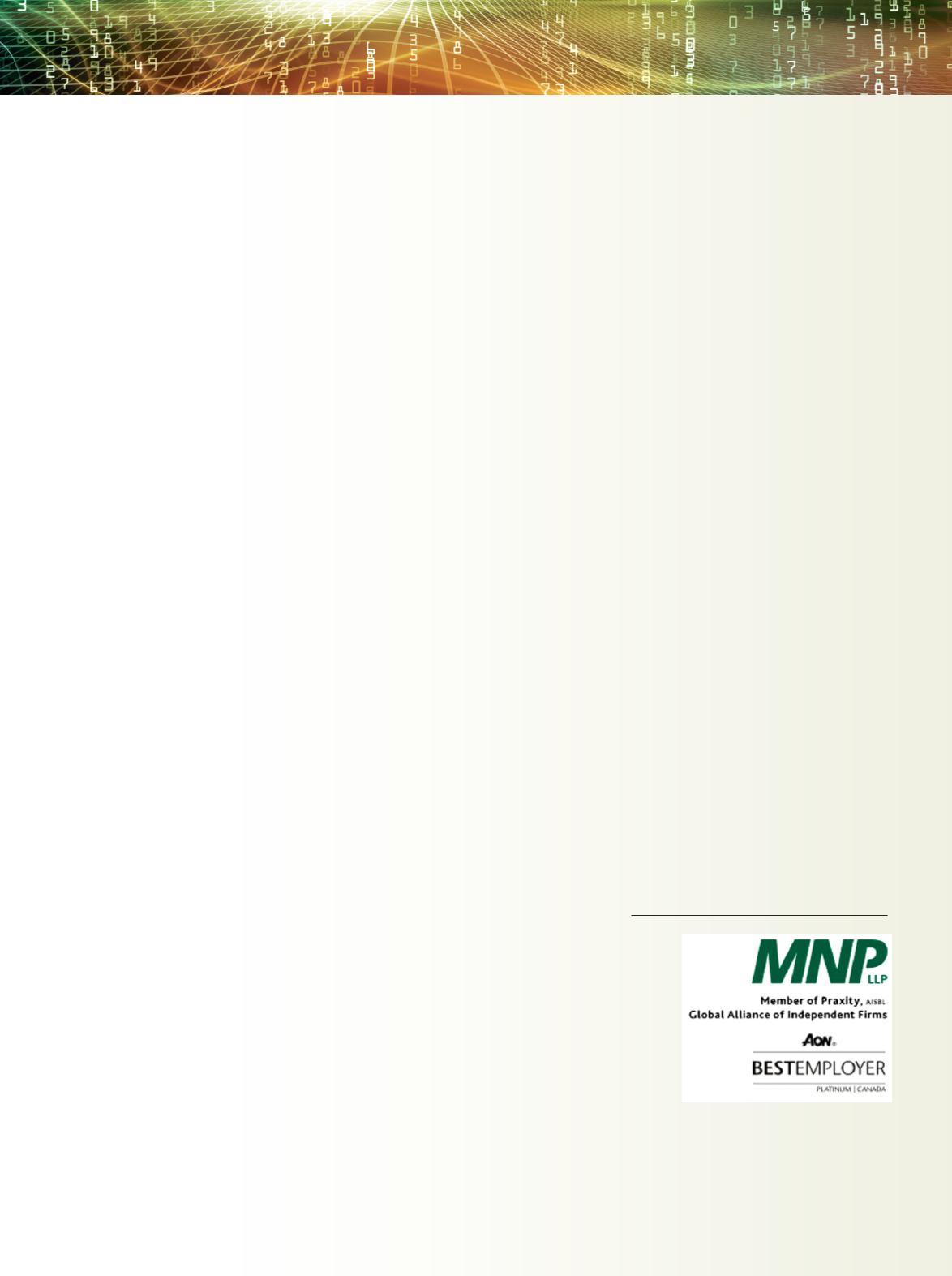

September 2016 //
Canadian Government Executive /
29
fected individuals and the Office of the
Privacy Commissioner of Canada (Com-
missioner) if the breach creates a “real
risk of significant harm to the individual.”
This would include incidents such as the
highly-publicized theft from the Canada
Revenue Agency of almost 1,000 social
insurance numbers in 2014.
It is important to note the act applies
to all public sector organizations. Ulti-
mately, any organization that collects,
uses or discloses personal information is
responsible to protect that information
and to mitigate damage should a breach
of privacy occur.
The following four-step approach will
help you to reduce the risk of and prepare
your organization to respond to a breach,
while ensuring resources are used where
they will make the most impact.
Reduce Liability – Know the
Rules
Protecting your organization and execu-
tives who could be held liable starts with
understanding the relevant legislation.
It will tell you what you are required to
do and suggest safeguards that should
be put in place. Depending on the leg-
islation, it may cover risk management,
security policies, human resources se-
curity, physical security, technical secu-
rity, incident management and business
continuity planning. A full cyber security
review should take into account all these
facets.
The Digital Privacy Act details specific
safeguards related to privacy breaches
including:
• Determining if the breach presents a
significant risk or harm to an individual.
• Notifying affected individuals of the
breach.
• Reporting the breach to the Commis-
sioner.
By having a clear understanding of your
cyber security risks, assets and your re-
sponsibilities in the event of a breach,
you increase protection, not only of
your organization’s data, but of your
constituents.
Take Your Cyber Security’s
Temperature
In the cyber security world, we talk
about how well protected an organi-
zation is by referring to its maturity: a
mature organization is well protected.
Determining maturity is much like con-
ducting a cyber security health check
and involves three primary activities:
• Evaluating how efficient your cyber
security controls are using a cyber se-
curity framework
• Determining which areas present the
highest risk if breached— risk to the
executive who is liable, to the individ-
uals affected by the breach and to the
organization
• Analyzing cyber attacks trends im-
pacting government agencies and the
frequency at which they are happening
Conducting a cyber health check en-
ables organizations to determine li-
ability and risks, understand the con-
trols they have and how to effectively
update their strategies and programs.
They provide clear direction on where
to focus their cyber security budget and
resources most effectively.
Engage Hired Guns to Test
Resiliency
Once step two is concluded, a trusted
third party should be hired to test how
difficult it is to attack areas deemed high
risk loss. Examples of such areas for the
public sector include perimeter protec-
tion - applications that store sensitive
data and mobiles that contain sensitive
information.
Prepare an Incident
Response Plan
All public sector organizations need to
determine what steps must be taken
if a breach occurs, regardless of which
piece of legislation they are accountable
to. The incident response plan should be
extensive and cover how you will:
• Notify the affected individuals
• Report the breach to the Commissioner
• Report the breach to your business
partners
• Contain the breach
• Mitigate the damage
A rapid, established response to breach-
es will help your organization resolve
the incident swiftly and with minimum
impact.
Privacy is a high-risk loss for govern-
ments of any kind, in terms of liabil-
ity, cost and loss of trust. Following the
above steps will help limit your expo-
sure, and help you enact an effective
incident response plan when a breach
occurs.
Danny Timmons,
CISSP, is MNP’s
National Cyber Security Leader
with more than 20 years of
experience leading highly skilled
cyber security teams.
By having a clear understanding of your cyber
security risks, assets and your responsibilities
in the event of a breach, you increase protection,
not only of your organization’s data, but of
your constituents.














